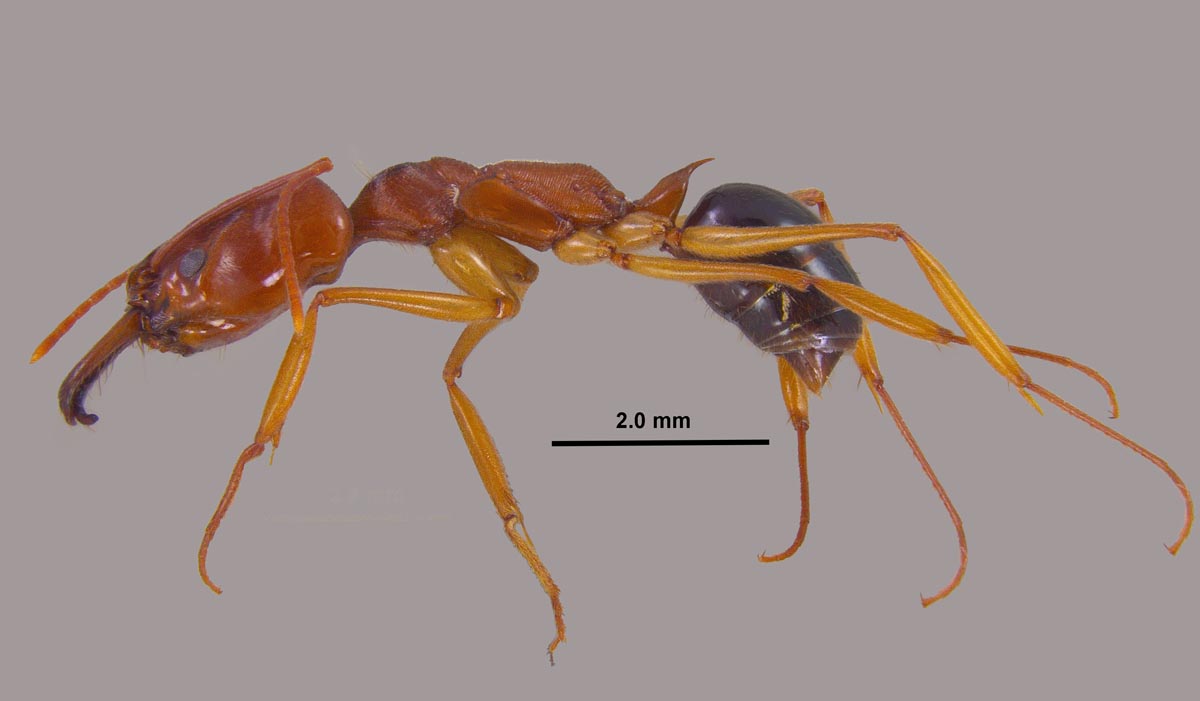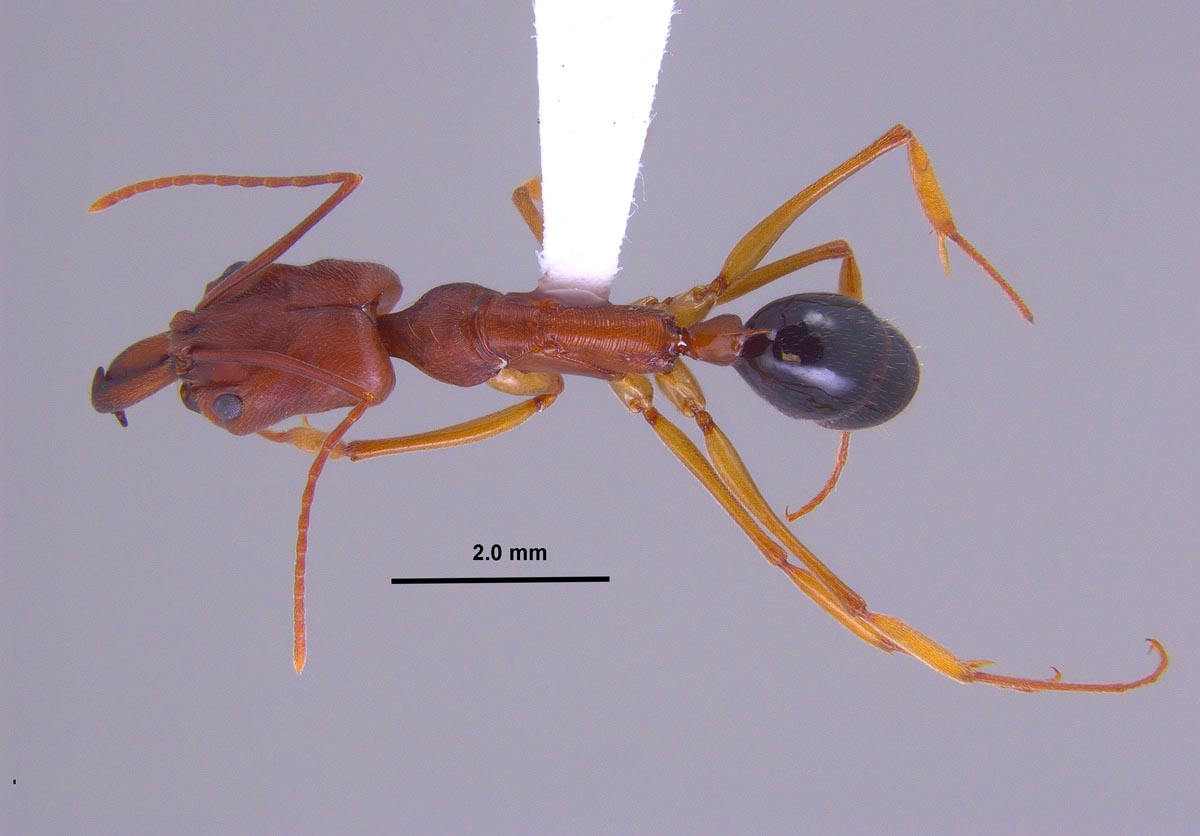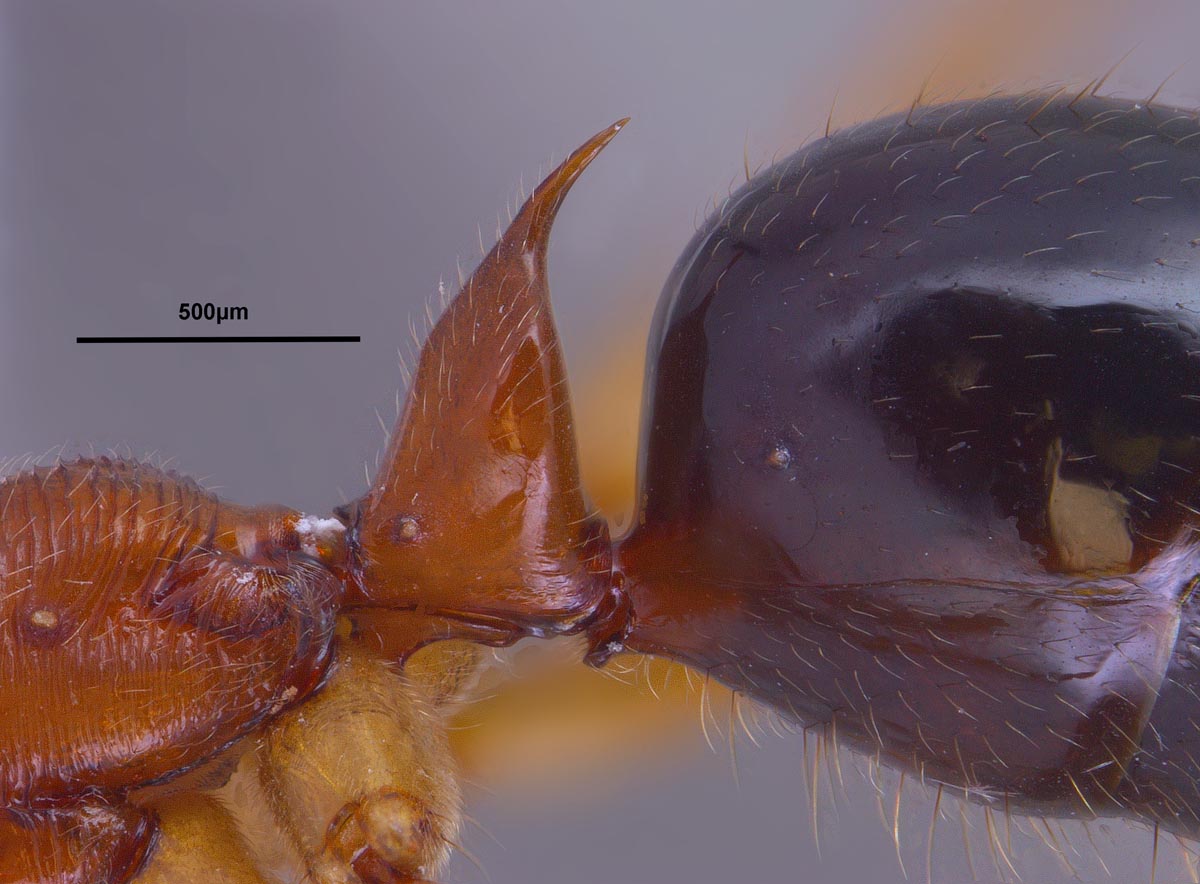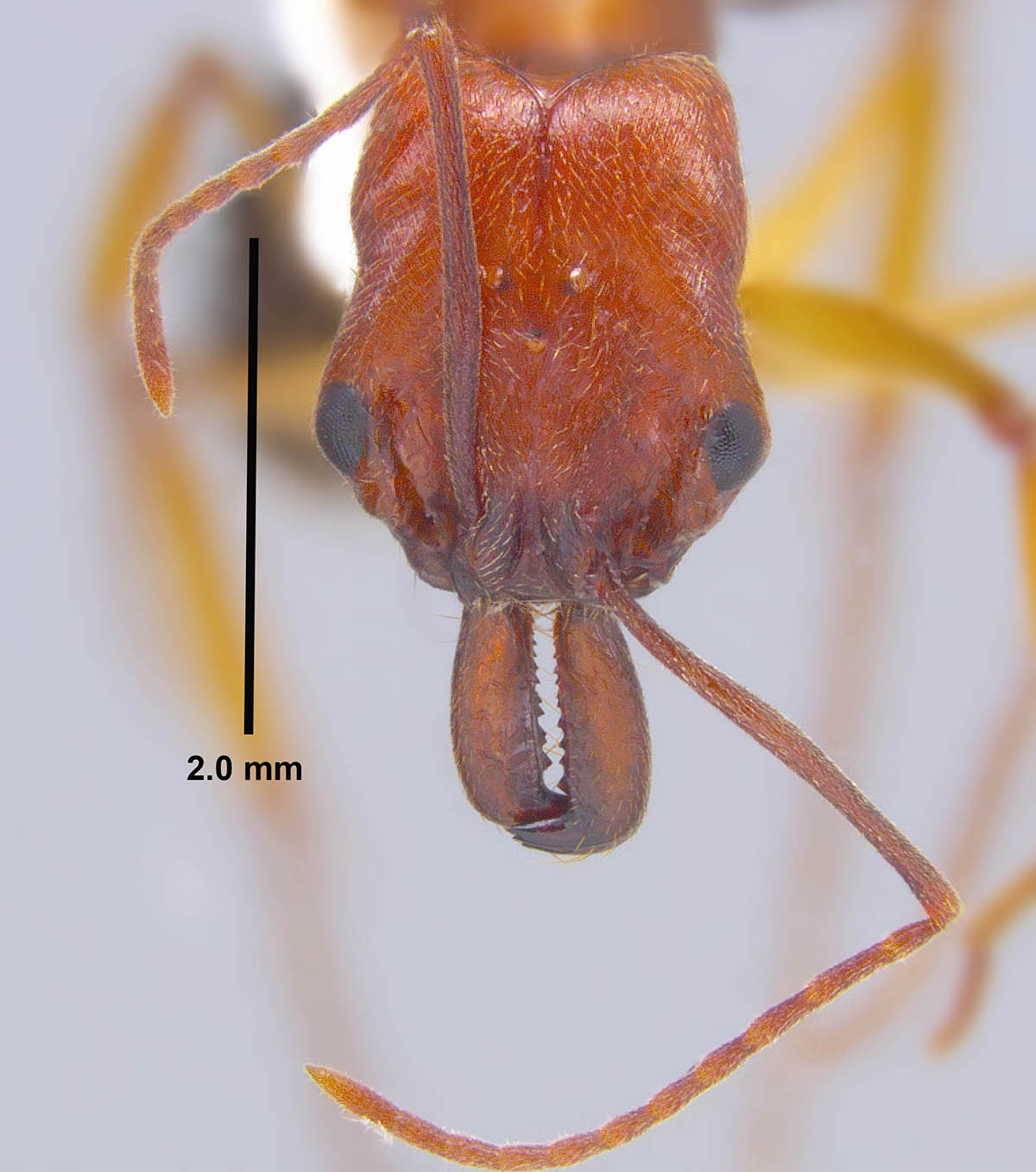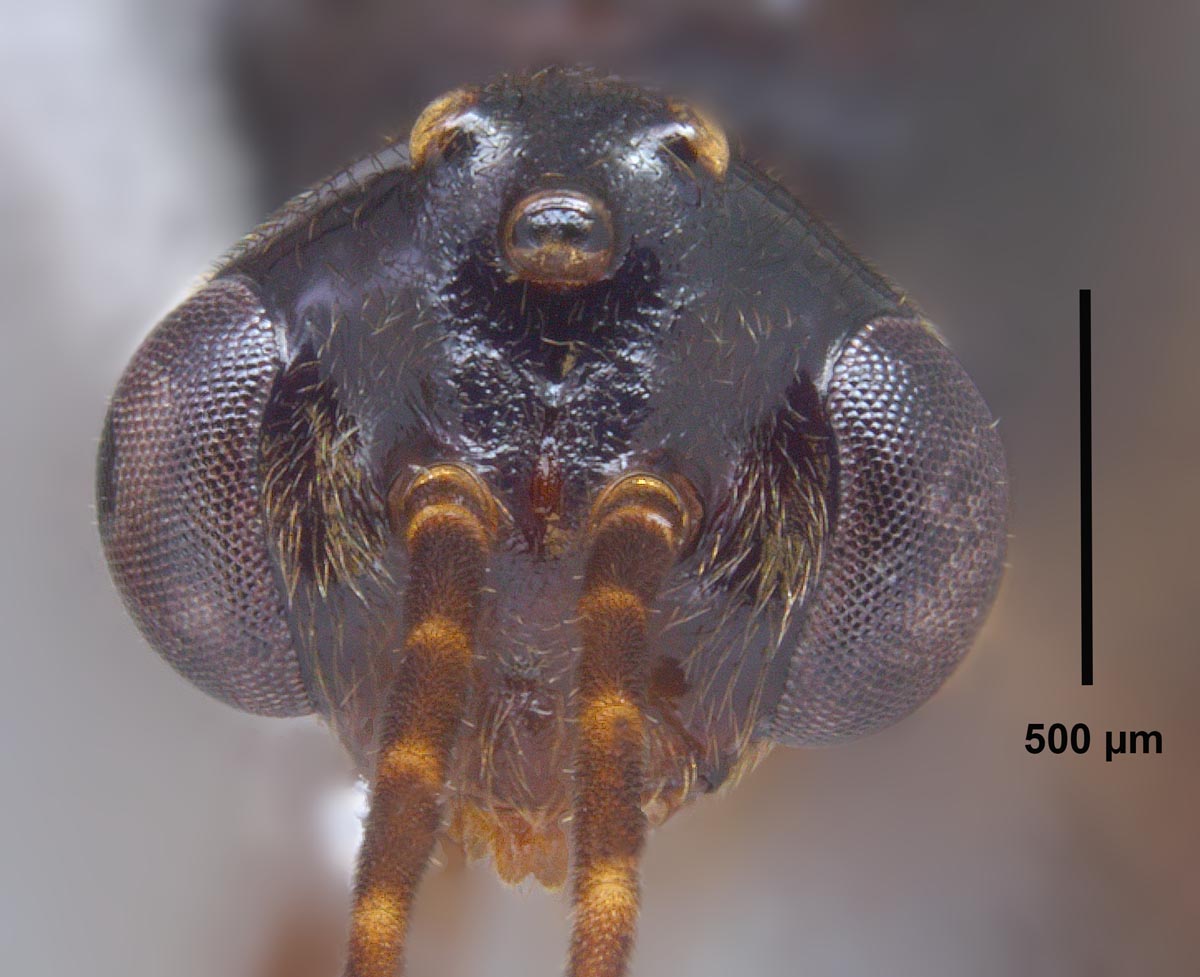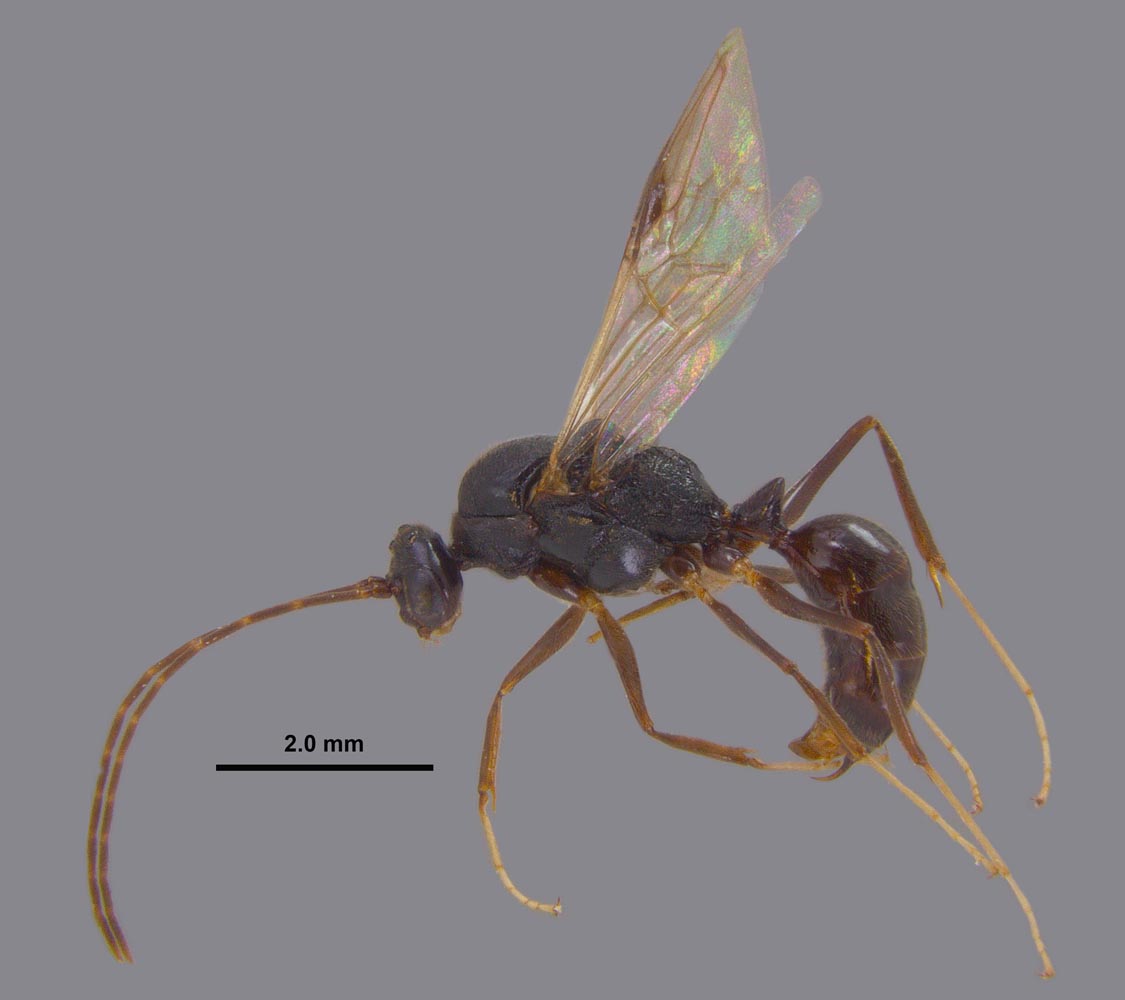Introduction
Ants in this genus differ from other ponerine ants found in the United States by the unique head shape; peculiar mandibles, which are elongate and inserted near the center of the clypeus (see photo above); the large tapering petiole; and the large size of the workers. Members of this genus are commonly called trap-jaw ants due to their elongate mandibles, which can be opened to 180°, then snapped rapidly together on prey. These ants are amazing in their ability to control and time the mandibular movement. When necessary, an ant can forcibly close the mandibles against a surface or other organism and actually propel itself away for up to several inches! Remarkable behavior. Additionally, they can use the mandibles for much more sensitive movements such as caring for larvae or nest building.
Odontomachus insularis is a large, ponerine ant that occurs in the Caribbean region.
Taxonomic History (from Barry Bolton, 2012)
Described as Odontomachus insularis Guérin-Méneville, 1844a: 423 (w.m.) CUBA. Forel, 1897b: 298 (q.). Subspecies of haematodus: Emery, 1890b: 44 (footnote); Smith, M.R. 1939d: 127. Revived status as species: Taylor & Wilson, 1962: 142. Material of the unavailable names pallens, wheeleri referred here by Brown, 1976a: 104.
Identification
Worker: EL 0.29-0.35, HL 1.88–2.22, HW 1.52–1.72, ML 1.14–1.26, PTH 1.04–1.12, PTL 0.44-0.50, SL 1.8–2.0, WL 2.59–3.0. Bicolored with the head, mandibles, scape, mesosoma, and petiole reddish-brown; gaster brownish-black to black; and legs yellowish brown (Figs. 18A-D). The petiole lacks obvious striations, the tip of the petiole is drawn out into a long, slender spine, and metasternal teeth are lacking (Figure 18C).
Male: EL 0.62, EW 0.38, HL 0.96, HW 1.22, OL 0.15, PTH 0.74, PTL 0.48, SL 0.19, WL 2.63 (n =1). Black with a dark brownish-black gaster. Ocelli small, diameter of each much smaller than space between lateral ocellus and compound eye; ocelli not raised on turrets.
Female: EL 0.39–0.40, HL 2.18–2.24, HW 1.84–1.96, OL 0.08–0.09, PTH 1.26–1.36, PTL 0.50–0.54, SL 2.02–2.08, WL 3.186–3.25 (n =2). Similar to workers but larger, with enlarged mesosoma, and with wings (alates).
In the US, Odontomachus insularis is most similar to O. clarus and O. relictus. Workers of O. insularis differ from these two species by having the petiolar spine strongly directed backwards.
Biology and Economic Importance
Similar to other members of this subfamily, Odontomachus workers have a prominent sting(er), and have the ability to inflict a relatively painful sting.
Distribution
Similar to other species in this genus, this species has often been misidentified. Thus, its distribution is somewhat unclear. However, supposedly it has been found in Cuba, Mexico, Dominican Republic, Saint Lucia, Trinidad and Tobago, and Grenada. Although this name is found in older literature for some US records, this species is not actually known to occur in the US.
Literature Cited
Bolton, B. 2012. Bolton World Catalog Ants. accessed on October 2012. [Available online: http://www.antweb.org/world.jsp]
Brown, W. L., Jr. 1976. Contributions toward a reclassification of the Formicidae. Part VI. Ponerinae, tribe Ponerini, subtribe Odontomachiti. Section A. Introduction, subtribal characters. Genus Odontomachus. Studia Entomol. 19:67-171.
Deyrup, M. and S. Cover. 2004. A new species of Odontomachus ant (Hymenoptera: Formicidae) from inland ridges of Florida, with a key to Odontomachus of the United States. Florida Entomologist 87: 136-144.
Deyrup, M., J. Trager, N. Carlin 1985. The genus Odontomachus in the southeastern United States (Hymenoptera: Formicidae). Entomological News 96:188-195.
Emery, C. 1890. Studii sulle formiche della fauna neotropica. Bull. Soc. Entomol. Ital. 22: 38-80.
Forel, A. 1897. Quelques Formicides de l'Antille de Grenada récoltés par M. H. H. Smith. Trans. Entomol. Soc. Lond. 1897: 297-300.
Guérin-Méneville, F. E. 1844a. Iconographie du règne animal de G. Cuvier, ou représentation d'après nature de l'une des espèces les plus remarquables, et souvent non encore figurées, de chaque genre d'animaux. Insectes. Paris: J. B. Baillière, 576 pp.
Smith, M. R. 1937(1936). The ants of Puerto Rico. Journal of Agriculture of the University of Puerto Rico 20:819-875.
Smith, M. R. 1939. A study of the subspecies of Odontomachus haematoda (L.) of the United States (Hymenoptera: Formicidae). J. N. Y. Entomol. Soc. 47: 125-130.
Taylor, R. W.; Wilson, E. O. 1962 [1961]. Ants from three remote oceanic islands. Psyche (Camb.) 68: 137-144.



